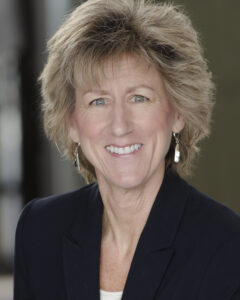VP, Client Success
Clinical and support staff are the backbone of the healthcare industry. Often asked to work with few resources to deliver care at the most important times in a patient’s care journey, clinicians deserve recognition and appreciation for all they do.
Faced with a workforce crisis like never before, health systems and hospitals need someone who understands these challenges — and at Get Well, we do understand. And we certainly appreciate those on our staff who have spent time as clinicians. That’s why we’re launching the Get Well Clinician Spotlight series — an opportunity to give the clinicians who work for Get Well the recognition they deserve and the space to share their stories and thoughts about the biggest challenges facing today’s clinician workforce.

VP, Client Success
Please share a little about your clinical background and what brought you to Get Well.
I practiced as a Registered Nurse for 15 years in Children’s Hospitals and an academic medical center; 13 of those in nursing leadership positions as a Nursing Director and then Nurse Executive.
I joined Get Well in spring of 2022 as VP of Client Success. What drew me here, first and foremost, was that Get Well was so fundamentally grounded in delivering the best outcomes for patients and clinicians, and keeping that at the center of everything it does. That really aligned with my values.
At a more macro level, we’re at an exciting and pivotal time in healthcare, where it’s imperative for technology to play an even more critical role in supporting the work of nursing and the entire healthcare team, with an equal focus on building and sustaining consumer loyalty. When I learned of Get Well’s forward thinking investment in its technology to match the changing needs of the inpatient and ambulatory care environments while focusing on empowering the patient along his/her journey, it was something I wanted to be involved with. I’m really fortunate to be part of this team and this important work.
What do you enjoy most about your work?
I’m very pragmatic and thoroughly enjoy ensuring that our hospitals and health systems can realize impact through use of the Get Well solution. I love engaging with hospital executive teams to understand how we can assist them in achieving their priorities while working alongside our incredibly talented Get Well client success team to translate that into suggestions for the care team and patient experience staff. I appreciate the consultative role that we play, drawing on our 20+ years of experience.
What are some of the biggest challenges facing today’s clinician workforce?
It is certainly well publicized the challenges that the past couple of years of the pandemic have created for our clinical workforce:
- High turnover and persistent staff vacancies leading care team members to be overwhelmed with their patients’ care needs while trying to deliver the quality care their patients expect and deserve and that they know they are capable of giving
- Many new staff members including travelers, with less experience and in most cases, unfamiliar with hospital practices and experiencing limited orientation and/or availability of support
- And in what seems like a perfect storm, patients with higher than ever expectations for timely responses and a new found demand for services given the digital responsiveness we became used to during the pandemic.
Many new staff members including travelers, with less experience and in many cases, unfamiliar with hospital practices and experiencing limited orientation and/or availability of support
And in what seems like a perfect storm, patients with higher than ever expectations for timely responses and a new found demand for services given the digital responsiveness we became used to during the pandemic.
What is the best way to address those challenges?
Certainly there’s never been a more important time to leverage technology and ensure it fits into the clinician’s workflow. We need to ensure our hospital technology serves our clinicians and lightens their load, and automates all possible manual redundancies.
We need to be certain that technology is as intuitive as possible and that the “win” for the clinicians is obvious, so that adoption is high and impact can be realized — for clinician time savings as well as quality patient care. And make it accessible in a way that works for the patient and the staff.
We have to help out new staff by automating standardized medication, diagnostic, procedural, and discharge education materials for the patient so they know they are delivering the right information to the patient despite limited orientation. This is so important for quality patient care.
So much can be done in empowering patients to request services by going straight to the right department versus telling their nurse and enhancing their experience by seeing first hand that their request was received and follow-up done. This puts patients in the driver’s seat at a time when they feel most vulnerable. This not only enhances their experience but helps them feel like an important individual whose needs are paramount to the whole hospital team.
And realizing that relaxing is an important part of therapeutic care and healing and that the patient should be able to navigate these options and experiences with competence and without stress.
Finally, we need to be precious with our staffs’ time, so technology should not require lots of training time — it needs to be intuitive and responsive for both patients and clinicians alike so they can stay at the bedside delivering care.
